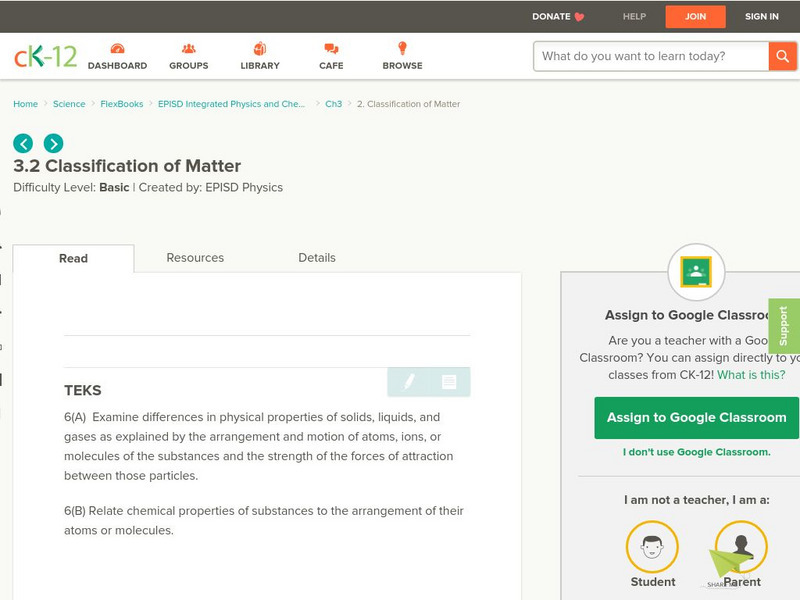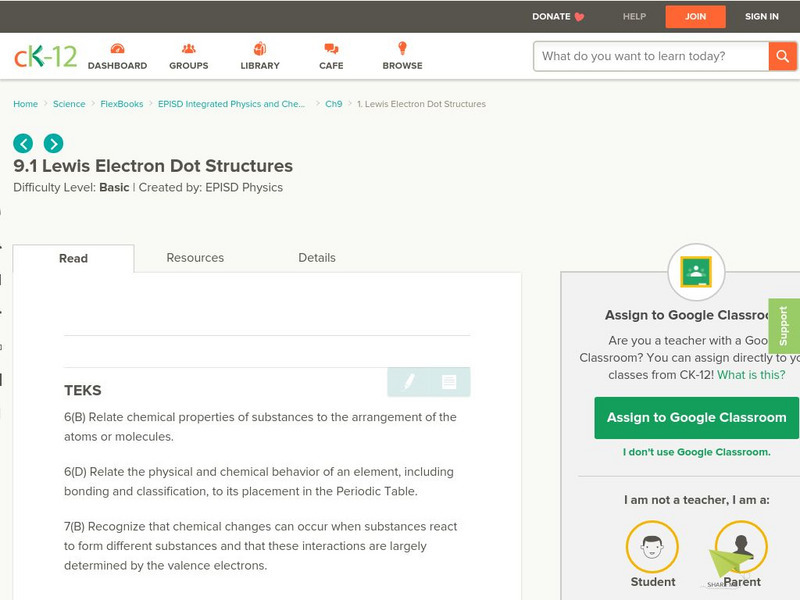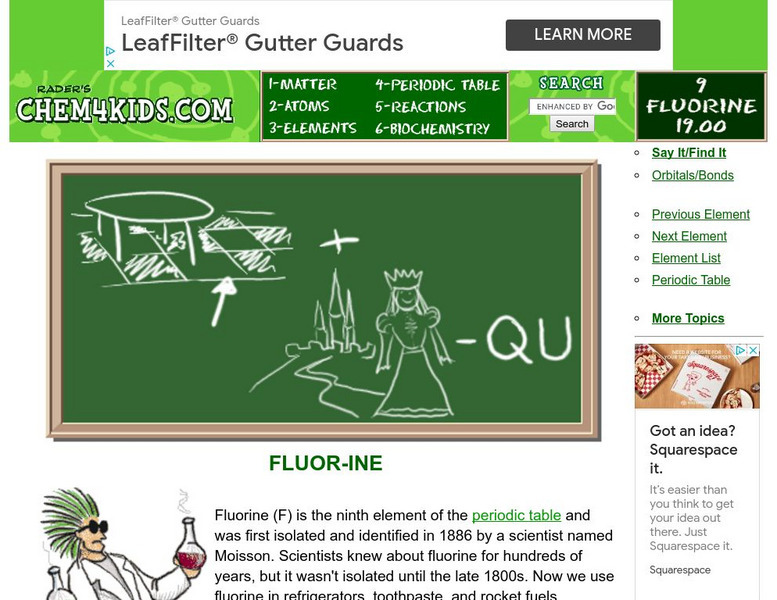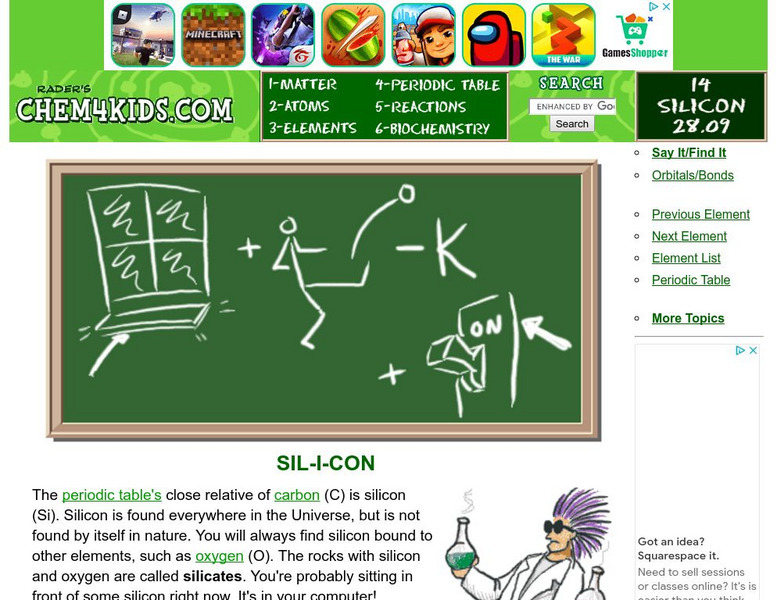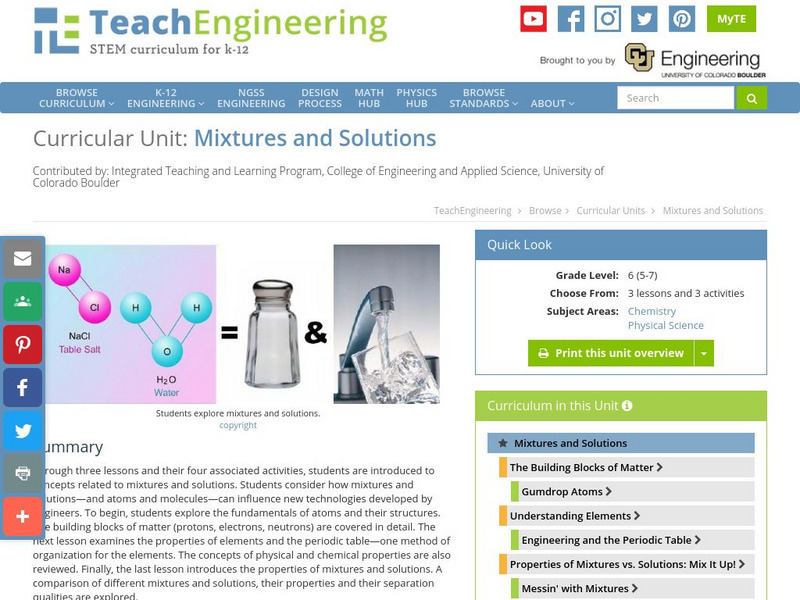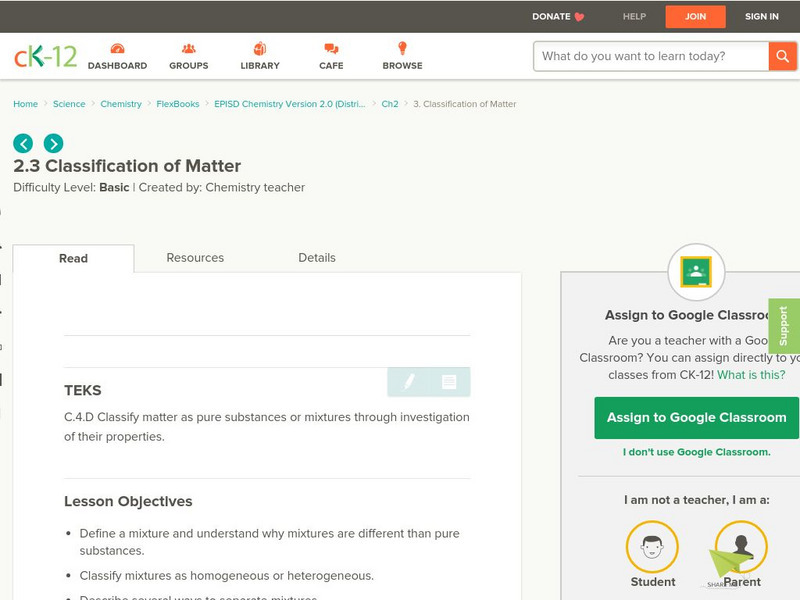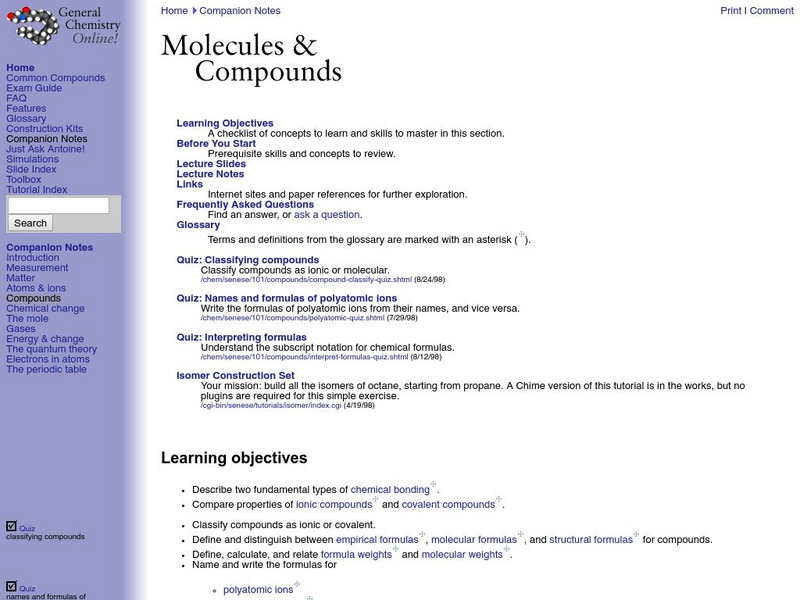Curated OER
Elements & Compounds KWL Worksheet
For this science KWL worksheet, students complete a KWL chart for elements and compounds. Students write what they know, what they want to learn, and what they have learned.
Curated OER
Water
In this water instructional activity, students compare and contrast elements and compounds. Students define chemical symbols, chemical formulas, and chemical properties. This instructional activity has 19 short answer questions.
Curated OER
Interpreting Chemical Formulas
In this chemical formulas activity, students practice naming molecular compounds by their formulas and determine if a gas is a compound or an element. This activity has 13 fill in the blank questions.
Curated OER
Woodruff- Compounds Word Search Puzzle
In this chemistry activity, learners look for the words in the puzzle that are related to the theme of the word search. The vocabulary and spelling are emphasized.
Curated OER
Science Puzzle
In this science worksheet, students identify and locate vocabulary words related to various sciences. There are 20 words located in the word search.
Curated OER
How Do Scientists Research For Lab Activities?
Students explore the nature of scientific knowledge. They will also explore how to develop a lab plan to explain the structures of molecules and atoms. Research is essential to the success of the lab using necessary educational software.
Chiral Publishing
Chiral Publishing: An Introduction to Chemistry: Types of Compounds
Discover different types of compounds such as binary covalent, binary ionic, binary acids, and oxyacids. Explore links that give information about writing names and formulas for different compounds.
University of Alberta
The University of Alberta: Infrared Spectroscopy
Complete this interactive tutorial and learn about interpreting the infrared spectrum ("I" "R") that provides information about the functional groups in a molecule. Included are 12 labs and a quiz.
CK-12 Foundation
Ck 12: Classification of Matter
[Free Registration/Login may be required to access all resource tools.] Students will use the physical and chemical properties of matter to categorize the various forms of matter.
CK-12 Foundation
Ck 12: Molecular Compounds
[Free Registration/Login may be required to access all resource tools.] Students investigate compounds, and learn the ways in which molecules are named.
CK-12 Foundation
Ck 12: Lewis Electron Dot Structures
[Free Registration/Login may be required to access all resource tools.] Students will use their knowledge of covalent bonds, and apply that to drawing Lewis dot structures to represent compounds.
Khan Academy
Khan Academy: Dalton's Atomic Theory
Article explores the key points of Dalton's atomic theory and the laws of conservation of mass and constant composition. Which points do we still use today?
Texas Education Agency
Texas Gateway: Classification of Matter by Composition
The following tutorial provides an explanation of classification of matter by composition.
Texas Education Agency
Texas Gateway: Elements and Compounds
In this fun and engaging online lesson, students differentiate between elements and compounds on the most basic level while having fun "encoding" the Periodic Table.
Texas Education Agency
Texas Gateway: Ionic Bonds: Electron Dot Formulas
Given descriptions, diagrams, scenarios, or chemical symbols, students will model ionic bonds using electron dot formulas.
Texas Education Agency
Texas Gateway: Properties: Mixtures
Given descriptions, scenarios, or illustrations of properties, students will distinguish between pure substances and mixtures.
Chem4kids
Chem4 Kids: Fluorine
Here you can find some great information about the 9th element in the periodic table, "fluorine." Content focuses on fluorine's electrons, where you can find fluorine in nature and in the home, and how fluorine combines with other elements.
Chem4kids
Chem4 Kids: Silicon (Si)
Here you can find some great information about the 14th element in the periodic table, "silicon." Content focuses on silicon's electrons, where you can find silicon in nature and in the home, and how silicon combines with other elements.
Chem4kids
Chem4 Kids: Phosphorus (P)
Here you can find some great information about the 15th element in the periodic table, "phosphorus." Content focuses on phosphorus' electrons, where you can find phosphorus in nature and in the home, and how phosphorus combines with...
Chem4kids
Chem4 Kids: Atoms
This site provides a detailed overview of atoms. Content explores an atom's structure, as well as what ions are, how atoms bond, what compounds are (including how to name compounds), and what isotopes are.
TeachEngineering
Teach Engineering: Mixtures and Solutions
This unit covers introductory concepts of mixtures and solutions. Students think about how mixtures and solutions, and atoms and molecules can influence new technologies developed by engineers. The first lesson explores the fundamentals...
CK-12 Foundation
Ck 12: Classification of Matter
[Free Registration/Login may be required to access all resource tools.] In this online tutorial students will define a mixture and understand why mixtures are different than pure substances. They will classify mixtures as homogeneous or...
Frostburg State University
General Chemistry Online: Molecules and Compounds
A complete lesson on compounds, from introductory material in the beginning to a practice exam at the end. This lesson covers bonding, ionic compounds, molecular compounds, naming compounds, structural formulas, polyatomic ions, and much...
PBS
Pbs Learning Media: Meaning of Matter
Matter is all around us, so it's a good idea to know what it is, and why it matters. Learn about matter, its categories, and its subcategories with this interactive lesson.










